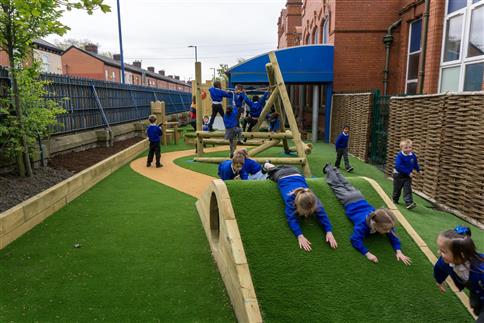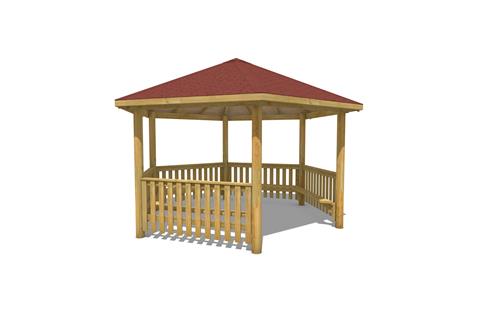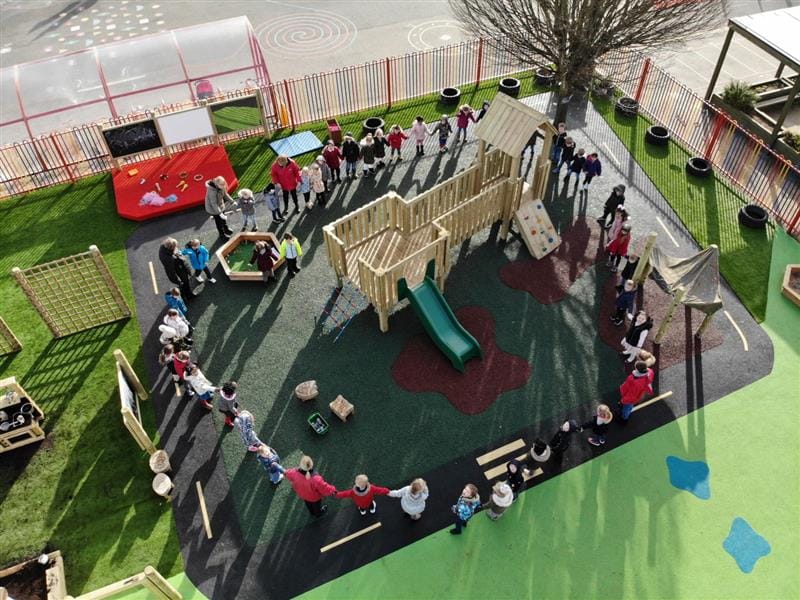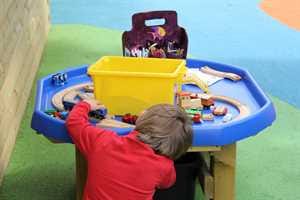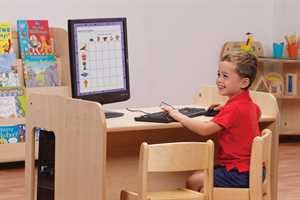
Children's Health
How Outdoor Play Improves Children's Mental Health
Children think better on their feet than on their seat.
Wise words from Mark Benden, Associate Professor of Environmental and Occupational Health, and Director of the Ergonomics Centre at Texas A&M University, when he spoke to Tes earlier this month.
Important words to have in mind when it comes to looking after the mental health and wellbeing of our children.
The value of outdoor play and outdoor learning, getting out and about, moving their bodies, and connecting to nature is huge for children's learning and development.
This blog will focus on supporting children’s mental health in schools!

Whether it’s structured learning in line with the curriculum, or free play and leisure time, getting outside makes for healthier and happier minds.
According to the Open University’s OPENspace Research Centre, there is considerable evidence suggesting that time spent outdoors, in nature, increases life expectancy, improves well-being, reduces symptoms of depression and increases a child’s ability to function in school.
In addition to better physical health, teachers report improved concentration, better ability to focus and learn, increased productivity, better behaviour, and the fostering of more positive relationships between adults and children and amongst peer groups, when children are more active and spend more time outside during the day.

Thrive, a recent initiative which began in Devon and is now sweeping across the UK, focuses on helping schools and childcare providers to develop healthy, happy and confident children who are ready and open to learning.
It draws on insights from recent advances in neuroscience and child development to provide a powerful way of working with children and young people that supports optimal social and emotional development.
In particular, it provides support for settings working with children and young people who have struggled with difficult life events, to help them re-engage with life and learning.
Product Spotlight
The Thrive Approach supports the notion that the outdoors is an ideal location for carrying out Thrive work, and provides a wealth of opportunities for both open-ended and structured learning.
How Does Outdoor Play and Learning Improve Mental Health and Wellbeing?
The outdoors is where children can most be themselves. With fewer restrictions, there is something about the outdoors that is exciting and exhilarating for them, a form of escapism.
This feeling of freedom in open space brings with it a sense of happiness and wellbeing that is hard to beat. Regular outdoor time is essential for children to experience these benefits and to mitigate the negative effects of excessive screen time.
The broadcaster and writer Ben Fogle speaks of how he struggled under traditional classroom and exam pressure as a child, how it left him feeling worthless and lacking in confidence.
He claims that the outdoors rescued him, and that feeling comfortable in the wild gave him the confidence to be who he is:
There is a natural simplicity to nature; it is far more tactile and tangible than the classroom. It’s a leveller; it strengthened my character and set me back on track. That’s why...we should focus on wellbeing and encouraging our children to connect with the natural world. I’m not suggesting the abolition of the exam system, but we could certainly cut back to allow more time for children to explore the world around them….We need to bring positivity, health and wellbeing back into our schools.
Healthier and Happier Children Outdoors
Claims that connecting children with the outdoors is good for their social and emotional development, improved mental health and psychological and emotional wellbeing, are backed with clear evidence.
A study by the American Medical Association concluded that “Children will be smarter, better able to get along with others, healthier and happier, when they have regular opportunities for free and unstructured play in the outdoors.”
Exposure to nature has a soothing effect on children, and can reduce hyperactivity, especially in those suffering from ADHD. For older children, engaging in outdoor activities like nature scavenger hunts and physical games can foster learning, attentiveness, and family bonding.
Here in the UK, a study performed across 2016 and 2017 by the Sport Industry Research Centre at Sheffield Hallam University, confirmed that life satisfaction and happiness are higher for people who are physically active, and their levels of anxiety are lower.
We now have conclusive evidence that sport and physical activity are clearly linked to mental wellbeing.
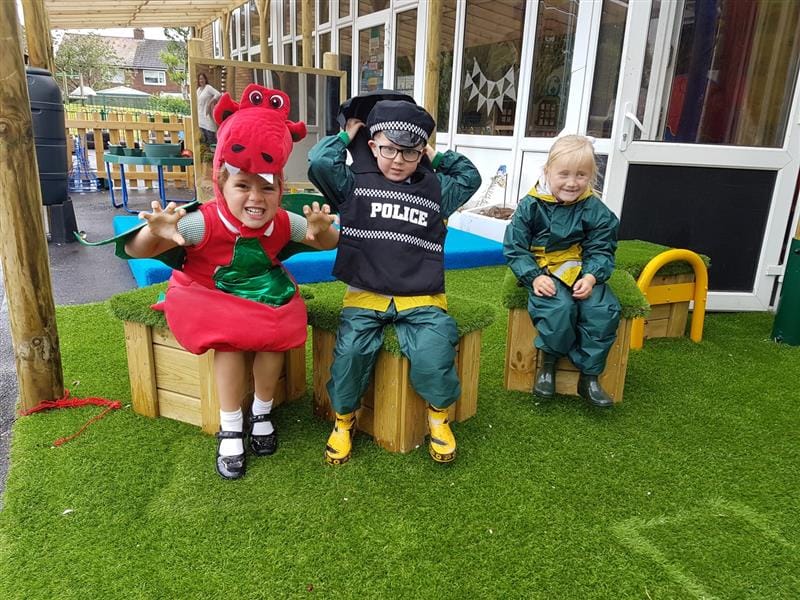
It’s Human Nature
Biology plays its part throughout. Being outside in natural sunlight allows our bodies to naturally produce Vitamin D, which releases the neurotransmitter serotonin in the brain.
This helps to regulate emotion and mood and is linked with happiness and relief from depression. Lack of sufficient time outdoors puts children at risk of Vitamin D deficiency, because the sun is the best source for Vitamin D production and it isn't found in many foods.
Time spent playing outdoors is also thought to help relieve stress and anxiety and improve mental health in children by reducing levels of the hormone cortisol in the brain.
A recent study in the UK found that even just five minutes of exercise in a natural outdoor environment can rapidly improve self esteem and mental health and wellbeing in young people. Modern day society inevitably exposes children to stressful environments.
Academic pressures, busy urban areas, flashing screens, all have an impact somewhere and can lead to anxiety. While this may be an unavoidable part of life, it's important to find a balance between exposure to these environments, and ensuring that children get more and plenty of time outside.
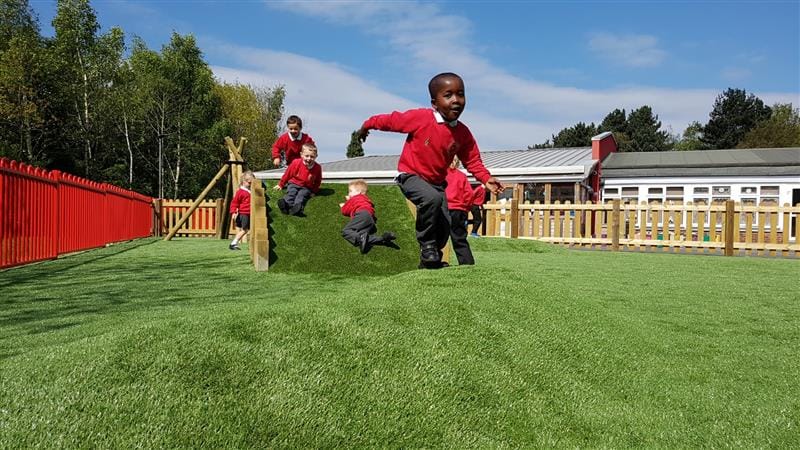
Better Mood and Improved Readiness to Learn
On some levels it’s very simple. Spending time out in the fresh air is a great way of clearing the head, and giving our brains a chance to refresh.
Children need time away from school work, homework, busy schedules and demanding routines. Time to have fun just playing, enjoying life in the outdoors and doing something that makes them feel good! Through this, they can feel balanced and refreshed, enhancing children's learning and readiness to engage in academic activities.
Playing outdoors is especially effective when it comes to combatting stress in children during exam season.
Mark Benden is very clear in his message that children should not be glued to their classroom chair for six hours a day
He explains that during his research, children became more restless and inattentive with prolonged sitting, and it seemed that active workstations were reducing disruption and increasing children’s ability to pay attention by breaking up the monotony of seated work.
Think about being in a long, post-lunch meeting. You’re getting a bit drowsy. You know that if you stand up, move around, orbit the perimeter of the table, you’ll become more alert. It’s the same with classroom students. Moving around encourages blood flow to the brain...
When children are happy, more attuned and more open to learning, teachers have better class management and can spend more time teaching instead of disciplining. All the more reason to get them up and out of their chairs!
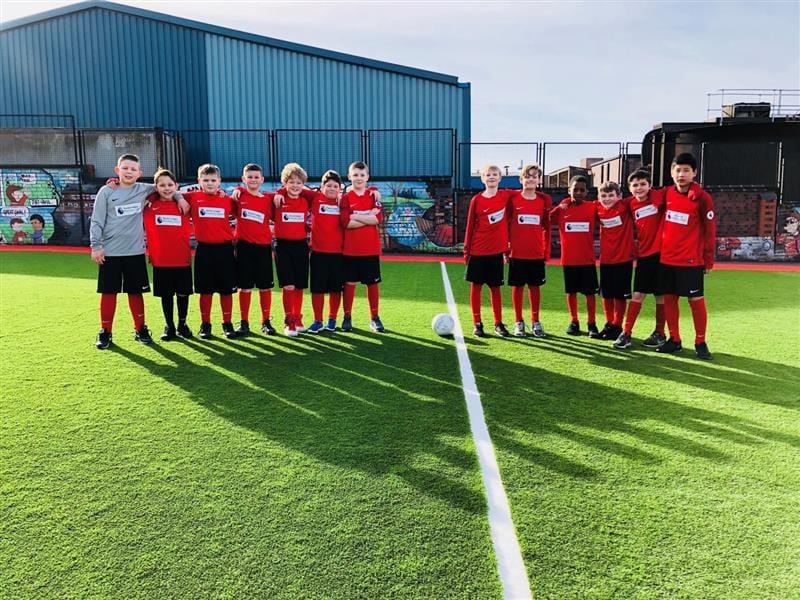
How to Improve Your Playground for Outdoor Play
Movement and access to the outdoors shouldn’t always have to stop once lessons begin. All through their Early Years and on into Key Stage 1 and Key Stage 2 it is so important that children keep moving and gaining experiences from the outdoors.
Given the huge number of resources that are now available for outdoor learning and cross-curricular activities across the board, for physical education and for the arts, language, maths and sciences too, taking traditional classroom lessons outdoors is becoming a much more feasible option. Incorporating regular outdoor time into the school day can significantly enhance children's learning and overall well-being.
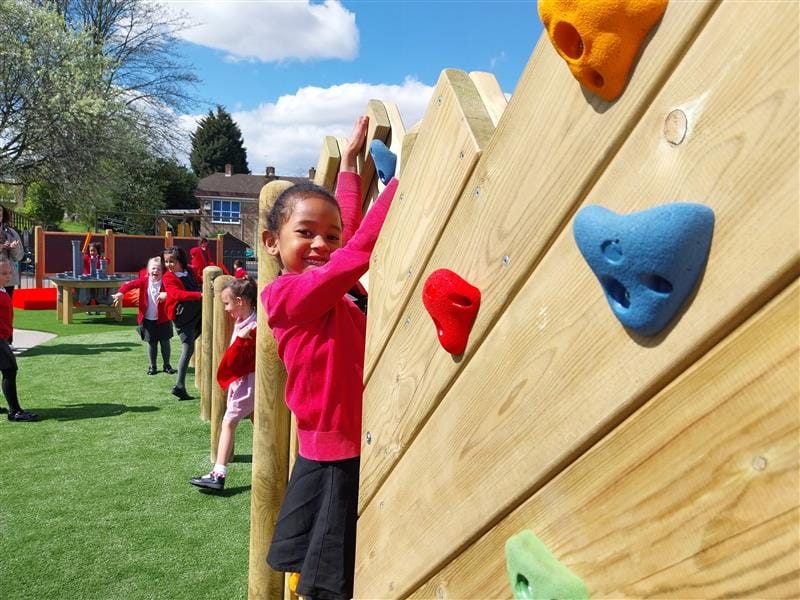
Here are some ideas to improve your school playground for outdoor learning…
Wildlife and Gardening
Wildlife, digging and gardening areas are a great place to start. Gardening is often used as a therapeutic intervention in mental health. And under the guise of planting, digging, growing, watering, nurturing and picking plants, children can learn about biology and life cycles, geography, climates and the environment.
Build on their language, vocabulary and ability to communicate with others in a relaxed environment. Learn about teamwork and the power of perseverance. With planted areas come insects and birds looking for a place to rest and eat.
Bug hotels and log piles encourage even more, offering visual resources and opportunities for hands on investigative and explorative learning. And through all these opportunities for high activity and physical movement, digging, lifting, pulling, also come moments of stillness and calm which bring comfort and reassurance to children.
A ladybird or a butterfly appearing on a leaf, for example, or stopping to notice a bird that has come to see what treats are in store.
View our range of Nature and Planting equipment.
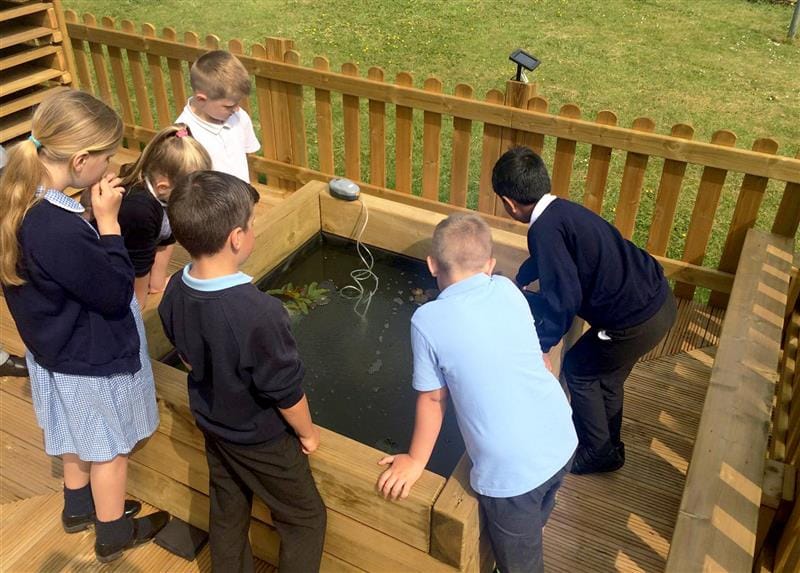
STEM Learning
Modern outdoor resources designed to aid teaching of STEM subjects outside, water walls, damming stations, kinetic play equipment, all of which require physical input, increasing opportunities for movement during the school day.
Structured activities that involve relating directly to aspects of the natural world, water cycles, energy and the environment, conservation, for example, give children the chance to establish respectful and meaningful relationships with their immediate environment and the world they find themselves in.
These types of relationships are encouraged by the Thrive Approach in particular where children have experienced trauma through the actions of others.
View our range of products that can be used to aid the teaching of STEM.
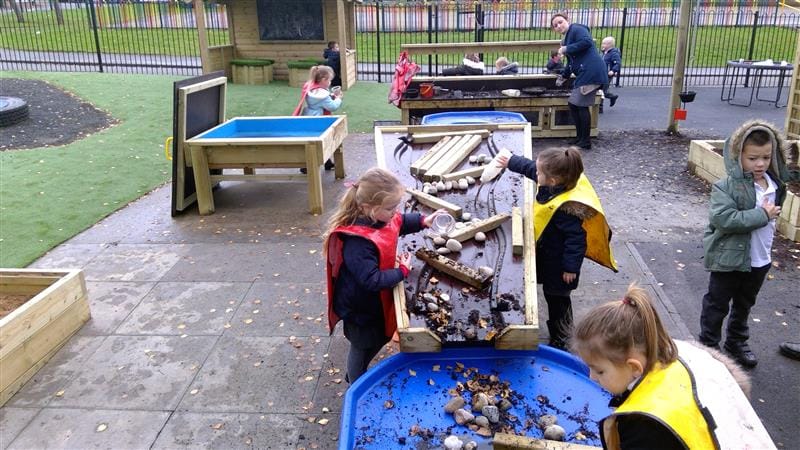
Den Building
Den building as a physical activity is ideal for relationship building and helping children to connect. Through teamwork and problem solving together, children experience achievement which can bring with it great satisfaction and joy.
Whether building a den from scratch with natural resources, or developing a wooden gazebo or outdoor classroom (an all-weather solution), den building is an open ended activity that can be used to build on themes and learning topics.
We have a fantastic range of Den Making and Playhouses for your playground.
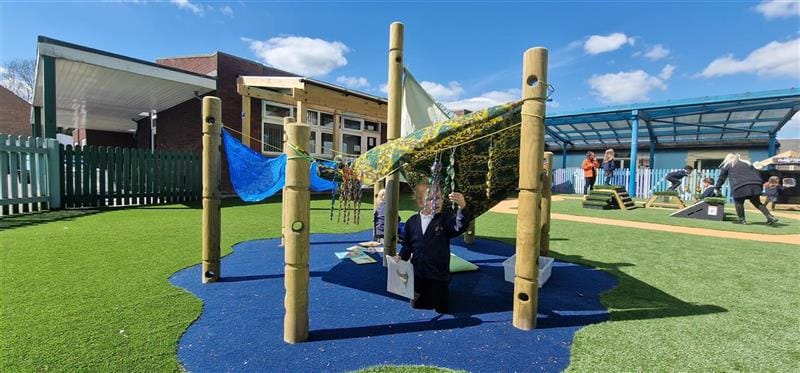
Physical Education
It may seem like the obvious subject choice to take outdoors, but many schools face challenges through inclement weather conditions, poor ground conditions and lack of facilities, and resort to using the school hall more frequently.
This doesn't have to be the case as improvements in product technology, recent increases in government funding specifically for schools' PE and sport, and the availability of grant funding, mean that all-weather playground surfacing, running tracks, pitches and MUGAs are becoming more of an affordable reality.
View our amazing range of active play equipment here.
Conclusion
By encouraging children to play outdoors, your school will be playing a vital role in helping your pupils remain happy and mentally healthy. These attributes in children can lead to other positive factors, such as a significant improvement in academic ability.
As these children are the future generation, let's make sure that we give them the best start in life by helping them establish a healthy mindset and a strong sense of wellbeing by offering outdoor play opportunities for any environment. As the old saying goes:
There's no such thing as bad weather, just bad clothes!

